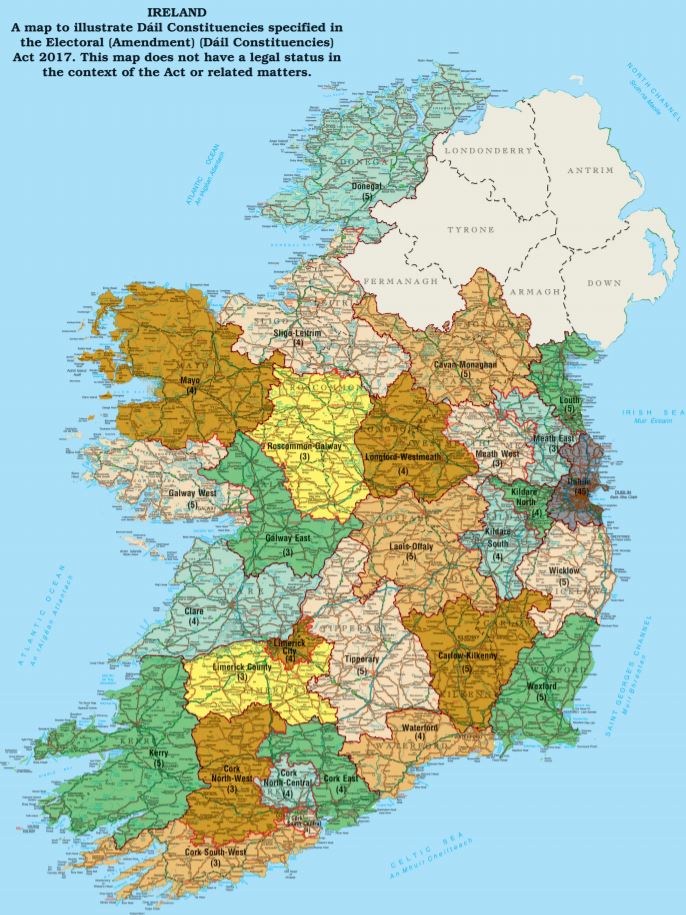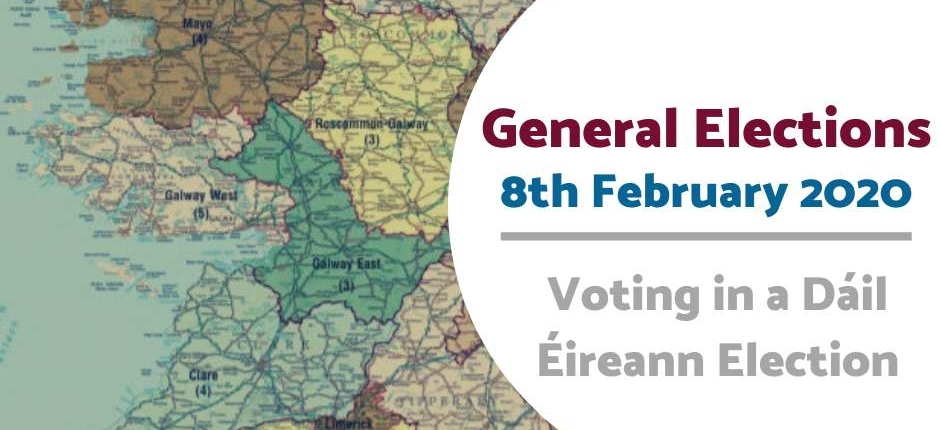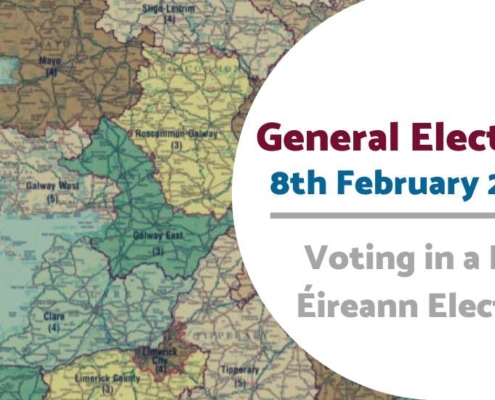Voting in a Dáil Éireann Election
Under Irish law, the Dáil may not continue for longer than five years. This means at least every five years, the Dáil must be dissolved and a general election held within 30 days.
The Members of Dáil Éireann are elected by the people of Ireland in a general election. A general election must be held at least every five years, and all Irish and British citizens who live in Ireland and are aged 18 years or over are entitled to vote.
For the purpose of general elections the country is divided into 39 areas known as constituencies. The size of these constituencies varies and they may elect three, four or five TDs. Constituency boundaries can be revised based on changing census results.
Ireland uses a system of proportional representation and each voter has a single transferrable vote. On polling day, voters are given a ballot paper with the names of all the candidates in their constituency. Voters do not select just one candidate, but can vote for several candidates in order of preference, giving number one to their favourite, two to their next choice and so on. If a voter’s number one candidate receives more number one votes than they need to be elected, their surplus is redistributed. This means the number two preferences on the surplus ballot papers are transferred to the other candidates.
 Dáil Constituencies
Dáil Constituencies
The 33rd Dáil consists of 160 members who represent the 39 constituencies specified in the Electoral (Amendment) (Dáil Constituencies) Act 2017 (see link here).
Galway West Costituency
Galway City falls under Galway West, one of the 39 areas known as constituencies. Due to its size, Galway West constituency may elect five TDs.
On polling day, voters in Galway City are given a ballot paper with the names of all the candidates in Galway West constituency. Voters can vote for several candidates in order of preference.
Voting
The following information is extracted from the governamental document How the Dáil is Elected available for download here.
On polling day, voters will have to request a ballot paper in the polling station by stating their name and address. The voters will have to be able to produce evidence of identity and, if they fail to do so, will not be permitted to vote.
The following documents are acceptable for identification purposes:
- a passport;
- a driving licence;
- an employee identity card containing a photograph;
- a student identity card issued by an educational institution and containing a photograph;
- a travel document containing name and photograph;
- a Bank or Savings or Credit Union book containing address in constituency or local electoral area;
- a Public Services Card;
OR
the following items, accompanied by a further document which establishes the address of the holder in the constituency or local electoral area:
- a cheque book;
- a cheque card;
- a credit card;
- a birth certificate;
- a marriage certificate.
Where the presiding officer is satisfied as to the elector’s identity, a ballot paper is stamped with an official mark and handed to the elector.
The elector votes in secret in a voting compartment.
The names of the candidates appear in alphabetical order on the ballot paper, together with their photograph, political affiliation and party emblem, if any.
The voter indicates the order of their choice by writing 1 opposite the name of their first choice, 2 opposite the name of their second choice, 3 opposite the name of their third choice and so on. In this way the voter instructs the returning officer to transfer the vote to the second choice candidate if the first choice is either elected or eliminated. If the same situation applies to the second choice, the vote may be transferred to the third choice and so on.
The voter folds the ballot paper to conceal how it has been marked and places it in a sealed ballot box.
A person may only vote once at the election.
Persons with a visual impairment, a physical disability or literacy difficulties may be assisted by the presiding officer or by a companion.
The presiding officer may order the arrest of any person suspected of committing an electoral offence.







